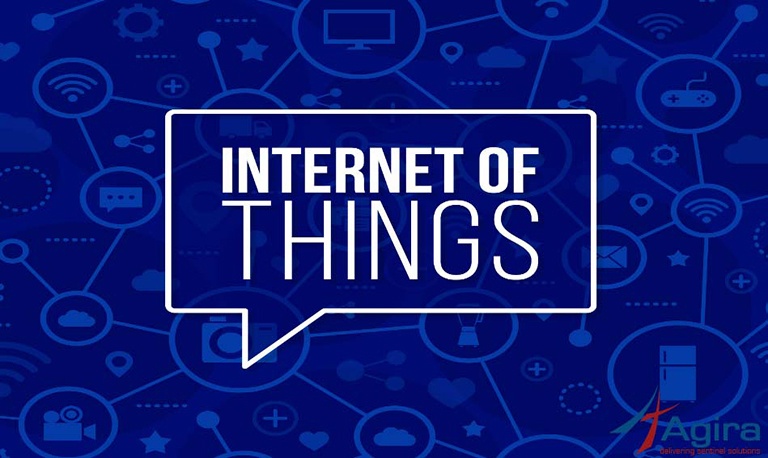Table of Contents
Everything around us has become smart, like smart infrastructures, smart cities, autonomous vehicles, to name a few. The innovation of smart devices makes it possible to achieve these heights in science and technology. But, data is vulnerable, there is a risk of attack by cybercriminals. To get started, let’s know about IoT devices.
What are IoT devices?
The Internet Of Things(IoT) is a system that interrelates computer devices like sensors, software, and actuators, digital machines, etc. They are linked together with particular objects that work through the internet and transfer data over devices without humans interference.
Famous examples are Amazon Alexa, Apple SIRI, Interconnected baby monitors, video doorbells, and smart thermostats.
How could your IoT devices be vulnerable?
When technologies grow and evolve, risks are also on the high stakes. Ransomware attacks are on the continuous increase; securing data has become the top priority.
When you think your smart home won’t fudge a thing against cybercriminals, you should also know that they are vulnerable. When cybercriminals access our smart voice speakers like Amazon Alexa or Apple Siri, it becomes easy for them to steal your data.
Cybersecurity report 2020 says popular hacking forums expose 770 million email addresses and 21 million unique passwords, 620 million accounts have been compromised from 16 hacked websites.
The attacks are likely to increase every year. To help you secure your data of IoT devices, here are some best tips you can implement.
Tips to secure your IoT devices
1. Change Default Router Name
Your router has the default name of make and model. When we stick with the manufacturer name, attackers can quickly identify our make and model. So give the router name different from your addresses, without giving away personal information.
2. Know your connected network and connected devices
If your devices are connected to the internet, these connections are vulnerable to cyber attacks when your devices don’t have the proper security. Almost every web interface is equipped with multiple devices, so it’s hard to track the device. But, it’s crucial to stay aware of them.
3. Change default usernames and passwords
When we use the default usernames and passwords, it is attackable. Because the cybercriminals possibly know the default passwords come with IoT devices. So use strong passwords to access our IoT devices.
4. Manage strong, Unique passwords for your IoT devices and accounts
Use strong or unique passwords that are easily assumed, such as ‘123456’ or ‘password1234’ to protect your accounts. Give strong and complex passwords formed by combinations of alphabets, numeric, and not easily bypassed symbols.
Also, change passwords for multiple accounts and change them regularly to avoid attacks. We can also set several attempts to wrong passwords to set locking the account to safeguard from the hackers.
5. Do not use Public WI-FI Networks
Are you try to keep an eye on your IoT devices through your mobile devices in different locations. I recommend you not to use the public WI-FI network to access them. Because they are easily accessible through for everyone, you are still in a hurry to access, use VPN that gives them protection against cyber-attacks, giving them privacy and security features, for example, using Express VPN.
6. Establish firewalls to discover the vulnerabilities
There are software and firewalls like intrusion detection system/intrusion prevention system in the market. This will be useful to screen and analyze the wire traffic of a network. You can identify the security weakness by the firewall scanners within the network structure. Use these firewalls to get rid of unwanted security issues and vulnerabilities.
7. Reconfigure your device settings
Every smart device comes with the insecure default settings, and sometimes we are not able to change these default settings configurations. These conditions need to be assessed and need to reconfigure the default settings.
8. Authenticate the IoT applications
Nowadays, every smart app offers authentication to secure the accounts. There are many types of authentication methods like single-factor authentication, two-step authentication, and multi-factor authentication. Use any one of these to send a one time password (OTP) to verify the user who logs in the smart device to keep our accounts from falling into the wrong hands.
9. Update the device software up to date
Every smart device manufacturer releases updates to fix bugs in their software. These security patches help us to improve our protection of the device. Also, update the software on the smartphone, which we are used to monitoring the IoT devices to avoid vulnerabilities.
10. Track the smartphones and keep them safe
When we connect the smart home to the smartphone and control them via smartphone, you need to keep them safe. If you miss the phone almost, every personal information is at risk to the cybercriminals. But sometimes it happens by accident, makes sure that you can clear all the data remotely.
However, securing smart devices is essential in the world of data. There are still cybercriminals bypassing the securities. So make sure to do the safety measures to avoid our accounts falling out into the wrong hands. I hope these steps will help you all to secure your IoT devices.
If you have any, feel free to share them in the comments! I’d love to know them.
Are you looking for more? Subscribe to weekly newsletters that can help your stay updated IoT application developments.







